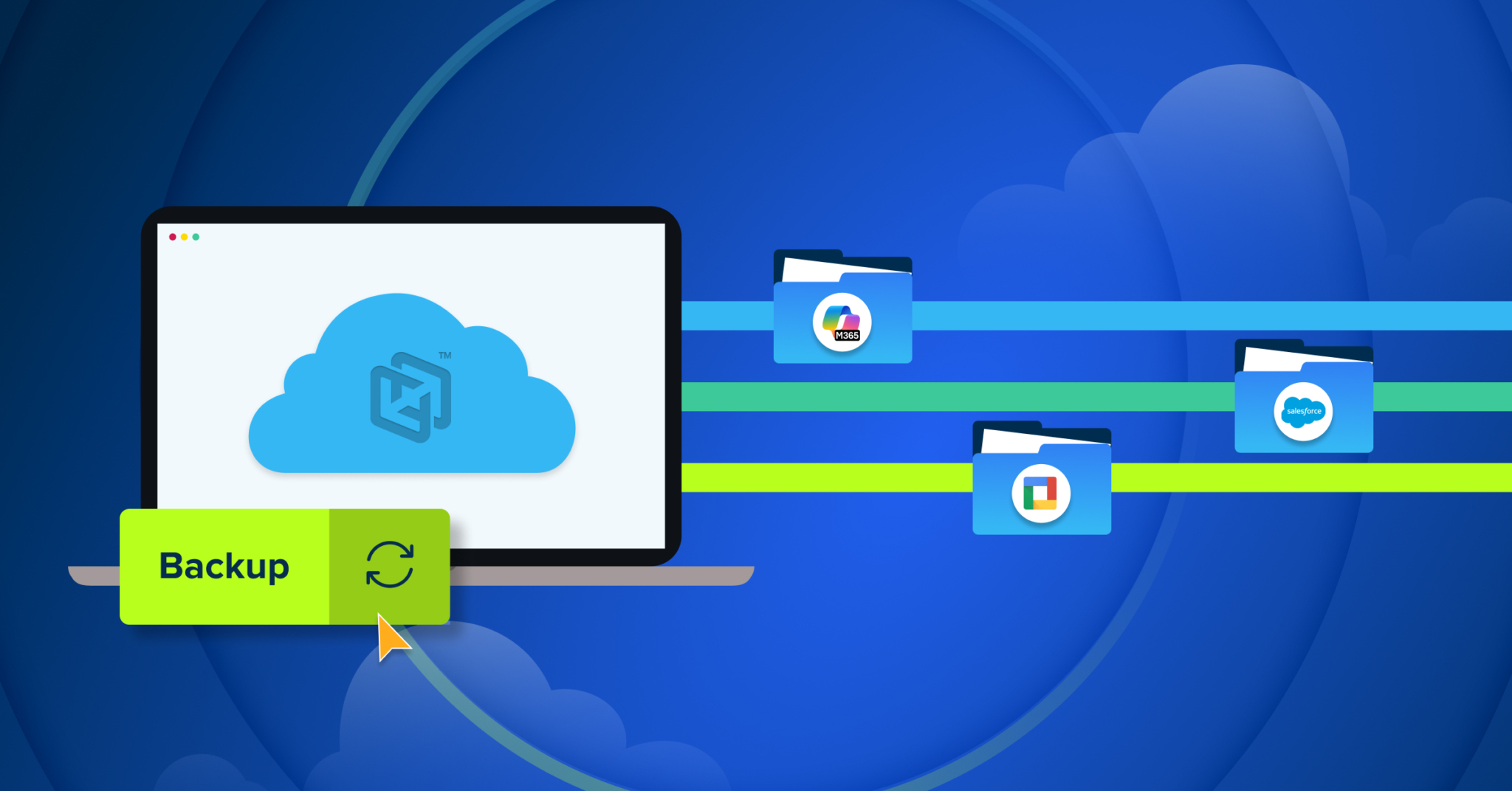
Whether it’s a server crash, ransomware attack, or accidental deletion, losing access to data can cripple operations. For enterprises, the challenge isn’t just to back up data. But to do data backup in a way that adapts as the business evolves. Here’s how to build a backup strategy that’s strong, flexible, and one that grows with your workplace needs:
Start with a data audit
Begin by auditing your data estate to identify what’s mission-critical to your operations. Catalog your data sources, client databases, financial systems, CRM platforms, user endpoints, and SaaS applications, and tag them based on business value and risk exposure. This classification lets you directly map backup frequency, recovery targets, and storage redundancy to business outcomes.
By tying protection levels to operational priorities, you move beyond generic data protection to a risk-aligned backup strategy. This helps justify budget allocations, supports compliance audits, and ensures your most valuable data always takes priority in backup and recovery workflows.
Flexible backup strategy
A flexible data backup strategy serves as security against data loss and operational disruptions.
Your business data faces multiple threats daily:
- Hardware failures
- Cyber attacks
- Human errors
- Natural disasters
- Software corruption
The impact of data loss extends beyond immediate financial consequences. Your organization risks:
- Damaged reputation
- Lost customer trust
- Regulatory compliance violations
- Decreased employee productivity
- Extended business downtime
A strong backup strategy adapts to your organization’s specific needs by protecting various data types, including critical business documents, customer databases, email communications, financial records, and proprietary software code. Building flexibility into a backup strategy involves using various types of backups in combination. Each one serves a purpose and fills a gap that the others might miss.
- Automated backups run on schedule according to defined policies, thereby reducing manual work. A combination of full, incremental, and differential backups helps keep the system efficient while covering all critical data.
- Snapshots capture the exact state of a system at a point in time. They are helpful for quick rollbacks and don’t take up too much space.
- Transaction logs track every change made to systems, such as databases. When combined with full backups, they allow teams to restore data to a specific point in time, helping to reduce the risk of data loss between backups.
- On-demand, or ad-hoc, backups give teams control before making risky changes, such as a software update or system migration, by allowing them to trigger a backup right before the activity.
- Long-term retention backups store records for years. They help meet legal and compliance requirements and are usually stored in secure, low-cost storage systems.
Data recovery planning
Backing up data is only the beginning. What really matters is the speed of data recovery when something goes wrong. That’s why every backup strategy should prioritize recovery over storage. Start by enabling recovery features that give your team flexibility and control. Use point-in-time restore to go back to the exact moment before a mistake, system failure, or data corruption occurred. This helps reduce downtime and prevents the need to restore everything from scratch.
In the case of larger disasters, like a regional outage, geo-restore can make all the difference. It allows you to recover systems in a different geographic location, keeping operations running while the affected site gets back online.
Set clear recovery time objectives (RTOs) for each system. Know how long you can afford to be offline, and measure your recovery performance against that goal. Don’t wait for an incident to find out whether your plan works; test it regularly and refine it as needed. A solid backup is only as good as your ability to bounce back. Plan for a fast and reliable recovery, and make it the goal from the start.
Align your backup strategy to your company’s needs
All systems aren’t created equal. Some require immediate recovery. Some provide a little leeway. Rather than guess, forward-thinking companies build their backup strategies on two concepts: Recovery Point Objective (RPO) and Recovery Time Objective (RTO).
RPO determines how recent your backup must be at all times. In other words, it says: How much new data do we need to save at all costs? For essential systems, such as financial databases, customer transactions, or order processing, the ideal is typically to have near-zero data loss. That implies the backups must occur regularly, even every few minutes. For less dynamic environments, such as old records or internal wikis, a less frequent backup schedule may be adequate. RPO helps you establish the optimal pace for data change capture, preventing system overload.
RTO is all about the speed of recovery. It asks: How quickly do we want this system back online in case there is a failure? The quicker the RTO, the faster the system needs to recover, sometimes within minutes, to ensure business continuity. This will be particularly important for customer-facing applications, communication platforms, or any system that facilitates real-time activities. If a system is less urgent, a longer RTO may be tolerable. Establishing an RTO helps define the tools, processes, and priorities you’ll need during recovery.
But backup planning doesn’t conclude with frequency and speed. Retention policies are crucial and often driven by the requirements of compliance, legal, and HR departments.
In most businesses, there are certain types of data that must be retained for years, not just weeks. Consider financial records, employee information, or customer correspondence. Internal audit policies, HIPAA, GDPR, or other regulations typically dictate how long to retain that data. Your HR and legal colleagues should be able to advise you on that.
Choose the right backup storage strategy
Where you store your backups affects how quickly you can recover and how well you can handle a disaster. Choose storage based on the importance of the data.
Two primary storage types are commonly used, each with its own advantages and disadvantages.
- Locally Redundant Storage (LRS) stores multiple copies of your data within a single data center. It’s fast and cost-effective, making it a good fit for non-critical workloads. However, since all copies are in one place, a site-wide outage or disaster could wipe them out.
- Geo-redundant storage (GRS) keeps multiple copies of your data in separate geographic locations. This setup protects against regional outages and helps you stay up and running, even during major disruptions. It costs more, but it’s essential for backing up core systems, customer data, and anything related to regulatory compliance.
Secure your backup
A backup is only useful if it’s protected. Security isn’t something to add later. It has to be part of the plan from the beginning. Start by encrypting your data. Use AES-256 to keep stored files safe, and apply TLS to protect data while it moves across networks. These basic steps prevent unauthorized access, both during storage and transfer.
Control over who can access your backups is just as important. Set up role-based permissions so only the right people have access. Add multi-factor authentication to stop unauthorized users, even if passwords are leaked. Make it a routine to check access logs and review user activity, so you can catch anything suspicious early.
Another key step is validating the backups themselves. Use hash verification to confirm that files haven’t been changed or damaged. This helps you avoid backing up corrupted data or files infected with malware. When security is built into every layer of your backup process, you get a reliable path to recovery.
Automate and monitor your backup
Manual backups slow teams down and increase the chance of mistakes. Automating key steps helps avoid that. Set up automated schedules so backups happen on time without relying on someone to trigger them. Automate retention policies to ensure data is kept only as long as needed. Move older backups to low-cost storage to keep your systems running smoothly. Storage tiering helps you reduce costs without losing access to long-term data. At the same time, keep an eye on how your backup systems perform. Track how often backups succeed, how long they take, and how much space they use. Set up alerts to flag anything unusual, like delays or failures, before they become real problems.
Testing your backups matters just as much. Don’t wait until something goes wrong. Run regular restore drills. Pretend a system failed or a file was lost, and walk through the recovery steps. If something doesn’t work, fix it, update your plan, and test again. You don’t just set up a backup once and leave it. As your systems evolve, update your backup plan to match. Keep refining it to stay prepared.
Verify and reconnect systems after the restore
Restoring data is just one step. The job isn’t done until everything runs as smoothly as it did before. Once a system is restored, check and update connection settings. Make sure security policies are correctly applied again. Confirm that cloud services sync as they should.
In a hybrid work setup, checking access is even more important. Ensure remote teams can log in, stable VPNs are available, and collaboration tools are back online. These tools keep work moving, and any delay impacts productivity.
Document every change made during the restore process. This will help during audits and support faster recovery in the future. Train your teams so they know exactly what to do after a restore, what to check, how to communicate, and how to confirm everything’s working. A backup is only successful when the business returns, not just when the files are recovered.
Frequently Asked Questions
How do we determine the optimal RPO and RTO requirements for different business systems?
Start with a data audit that ranks your systems by business value and risk. Your CRM and financial systems typically need the fastest recovery times and minimal data loss. Client databases may require hourly backups, while marketing files can handle daily backups. Map each system’s downtime cost against backup expenses. Some apps can wait 24 hours to recover, but payment processing usually needs a near-instant failover.
What factors should we consider when choosing between cloud, on-premises, or hybrid backup solutions?
Storage costs and data volume are the primary concerns – cloud solutions can become expensive with large datasets. Network speed affects backup windows; slow uploads may rule out pure cloud options. On-premises gives you total control but requires hardware investment and maintenance staff. Hybrid backup usually works best for most companies, keeping critical data local while using cloud for archives and disaster recovery.
How can we implement a backup strategy that ensures compliance while maintaining operational efficiency?
Match backup frequency to data security and compliance rules. Financial records need encrypted backups with access logs. Customer data requires geo-specific storage locations. But don’t overdo it;not everything needs hourly snapshots. Use automated policies to schedule backups during off-peak hours. And keep some local copies for quick recovery while maintaining offsite backups for compliance.
What are the best practices for testing and validating backup restoration procedures?
Run regular restore tests on different data types. Try recovering a few random files weekly, whole databases monthly, and complete system restores quarterly. Document recovery times and success rates. Test restores on separate hardware to catch compatibility issues. Don’t just check if a files exist – validate data integrity and app functionality after recovery.


